
Busan: The Coastal Gem of South Korea
Discover Busan's blend of stunning beaches, vibrant markets, and rich cultural heritage, making it a perfect destination for both relaxation and exploration.
Busan is a vibrant city nestled on the southeastern coast of South Korea. Known for its stunning beaches, bustling markets, and rich cultural heritage, Busan offers a unique blend of urban excitement and natural beauty. The city's coastline is dotted with picturesque beaches like Haeundae and Gwangalli, where visitors can relax and enjoy the soothing sound of the waves. Haeundae Beach, in particular, is famous for its wide sandy shore and lively atmosphere, making it a must-visit spot for tourists. The city's cultural scene is equally captivating. The ancient Beomeosa Temple, built on the slopes of Geumjeongsan Mountain, offers a serene escape into history and spirituality. For a taste of local life, head to Jagalchi Fish Market, the largest seafood market in Korea, where you can sample fresh catches and experience the vibrant energy of local vendors. Another highlight is the Gamcheon Culture Village, a colorful hillside community adorned with murals and sculptures, offering breathtaking views of the city and the sea. Busan is also renowned for its events and festivals. The Busan International Film Festival (BIFF) attracts cinephiles from around the world, showcasing a diverse range of films and fostering a global exchange of ideas. Additionally, the city's culinary scene is not to be missed. From street food stalls to high-end restaurants, Busan offers a wide array of flavors, with seafood being a particular specialty. Try the local delicacy, Ssiat Hotteok, a sweet pancake filled with seeds and nuts, for a delightful treat.
Local tips in Busan
- Visit Haeundae Beach early in the morning to avoid crowds and enjoy the sunrise.
- Take a city tour on the Busan City Tour Bus for a convenient way to see major attractions.
- Try the fresh seafood at Jagalchi Fish Market for an authentic local dining experience.
- Wear comfortable shoes when exploring Gamcheon Culture Village as the area is hilly.
- Check the schedule for the Busan International Film Festival if visiting in October.
Neighbourhoods in Busan
Busan: The Coastal Gem of South Korea
Busan is a vibrant city nestled on the southeastern coast of South Korea. Known for its stunning beaches, bustling markets, and rich cultural heritage, Busan offers a unique blend of urban excitement and natural beauty. The city's coastline is dotted with picturesque beaches like Haeundae and Gwangalli, where visitors can relax and enjoy the soothing sound of the waves. Haeundae Beach, in particular, is famous for its wide sandy shore and lively atmosphere, making it a must-visit spot for tourists. The city's cultural scene is equally captivating. The ancient Beomeosa Temple, built on the slopes of Geumjeongsan Mountain, offers a serene escape into history and spirituality. For a taste of local life, head to Jagalchi Fish Market, the largest seafood market in Korea, where you can sample fresh catches and experience the vibrant energy of local vendors. Another highlight is the Gamcheon Culture Village, a colorful hillside community adorned with murals and sculptures, offering breathtaking views of the city and the sea. Busan is also renowned for its events and festivals. The Busan International Film Festival (BIFF) attracts cinephiles from around the world, showcasing a diverse range of films and fostering a global exchange of ideas. Additionally, the city's culinary scene is not to be missed. From street food stalls to high-end restaurants, Busan offers a wide array of flavors, with seafood being a particular specialty. Try the local delicacy, Ssiat Hotteok, a sweet pancake filled with seeds and nuts, for a delightful treat.
When is the best time to go to Busan?
Iconic landmarks you can’t miss
Gamcheon Culture Village
Explore the artistic haven of Gamcheon Culture Village in Busan, where vibrant murals and colorful houses create a unique cultural experience.
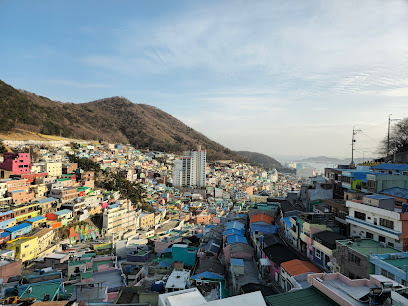
Haedong Yonggungsa Temple
Discover the tranquil beauty of Haedong Yonggungsa Temple, a coastal Buddhist sanctuary in Busan, where spirituality meets stunning ocean vistas.

Jagalchi Market
Discover the bustling Jagalchi Market in Busan, Korea's premier seafood destination, where fresh catches and vibrant local culture come together.
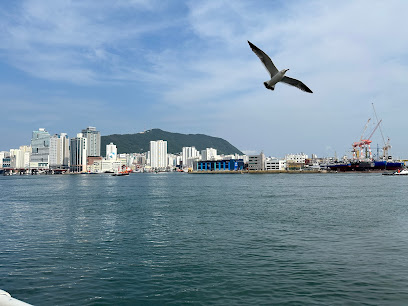
BIFF Square
Experience the vibrant culture and culinary delights at Busan’s BIFF Square, a lively hotspot for tourists and locals alike.
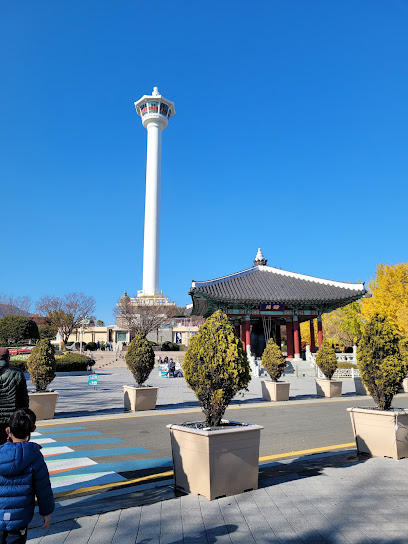
Gukje Market
Experience the vibrant culture and authentic flavors of Busan at Gukje Market, a must-visit destination for every traveler.
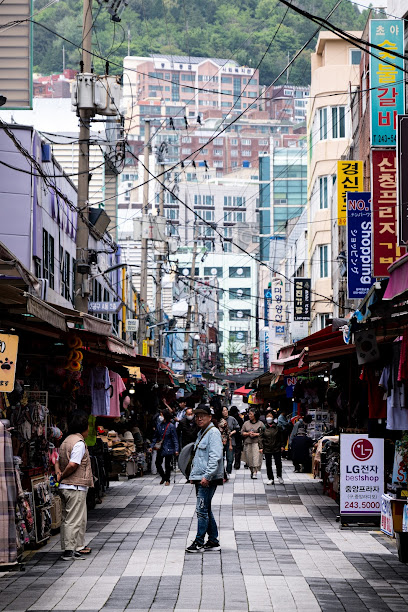
Oryukdo Skywalk
Discover the breathtaking views and thrilling experience of Oryukdo Skywalk in Busan, a must-visit observation deck for every traveler.
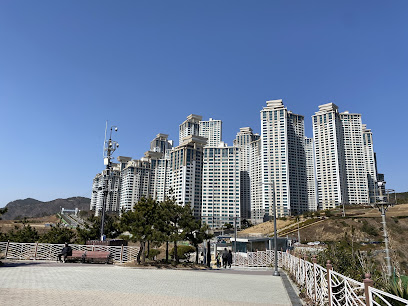
Busan Citizens Park
Discover the serenity and beauty of Busan Citizens Park, a lush urban retreat filled with gardens, culture, and endless opportunities for relaxation.
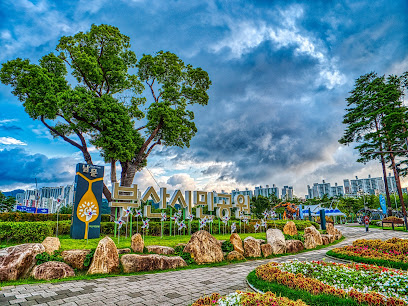
Diamond Tower (Busan Tower)
Experience breathtaking views of Busan and its coastline from Diamond Tower, a must-visit observation deck in Yongdusan Park.
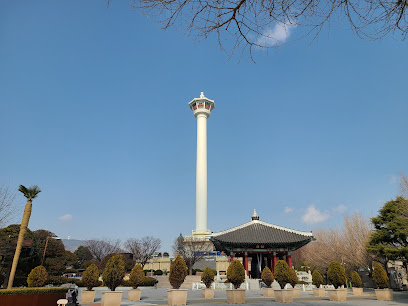
Huinnyeoul Culture Village
Explore the hidden gem of Huinnyeoul Culture Village in Busan, where art meets nature in a vibrant coastal setting.

Yongdusan Park
Explore the tranquil beauty and cultural landmarks of Yongdusan Park in the heart of Busan, a perfect retreat for tourists.
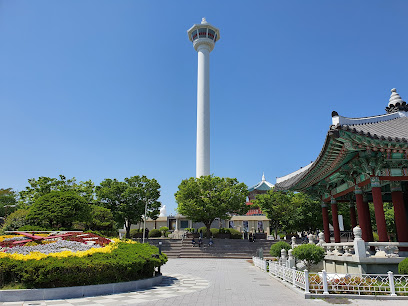
Taejongdae Resort Park, Busan
Explore the coastal beauty and vibrant nature of Taejongdae Resort Park in Busan, a perfect destination for adventure and relaxation.

Beacon Fire Station in Hwangryeong Mountain
Discover the rich history and breathtaking views at Beacon Fire Station, a must-see landmark in Hwangryeong Mountain, Busan.
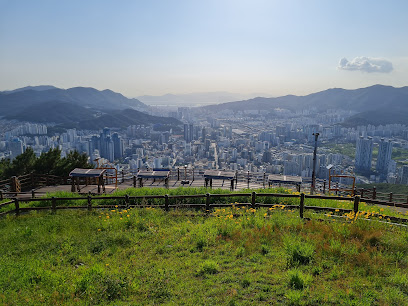
Bosu Book Street
Discover Busan's literary treasure, Bosu Book Street, where bookstores and cafés create a vibrant cultural experience for all visitors.
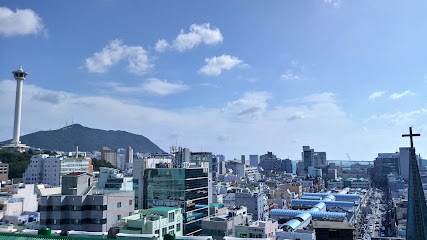
Samnak Ecological Park
Experience the natural beauty and serene landscapes of Samnak Ecological Park in Busan, a must-visit ecological sanctuary for nature lovers.
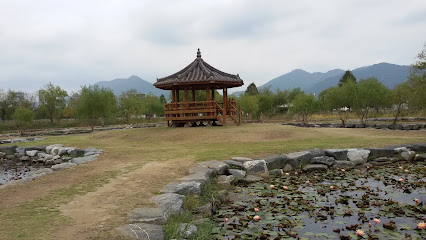
Taejongdae Observation Deck
Experience stunning coastal views and vibrant landscapes at the Taejongdae Observation Deck in Busan, South Korea's breathtaking natural wonder.
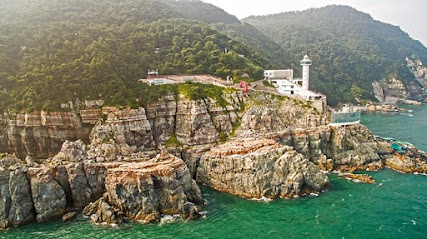
Unmissable attractions to see
Gamcheon Culture Village
Explore the artistic heart of Busan in Gamcheon Culture Village, a colorful and historic community with stunning views and vibrant culture.
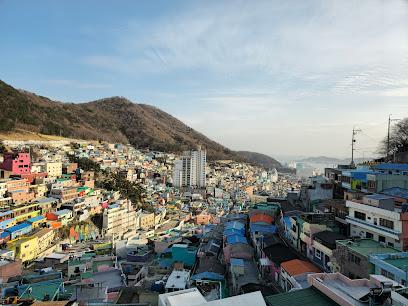
Haedong Yonggungsa Temple
Experience the serene beauty and rich heritage of Haedong Yonggungsa Temple, a coastal Buddhist sanctuary in Busan that captivates every visitor.
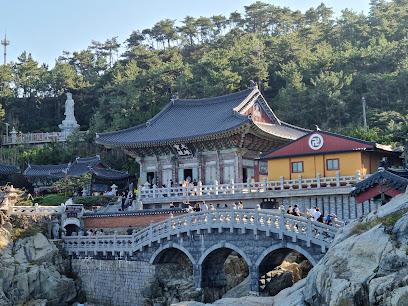
Jagalchi Market
Explore the bustling Jagalchi Market in Busan, Korea's largest seafood market, where fresh catches and local culture meet in a vibrant atmosphere.
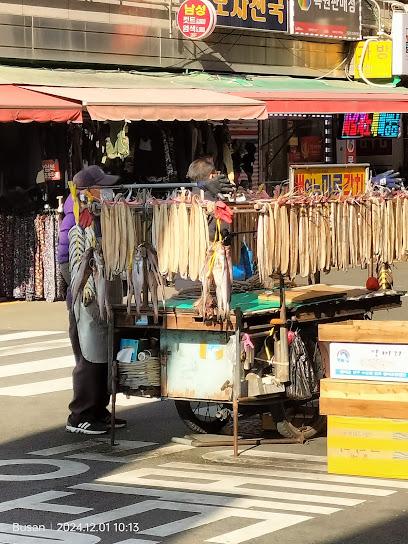
Bupyeong Kkangtong Market
Experience the flavors and culture of Busan at Bupyeong Kkangtong Market, a vibrant traditional market and night market destination.
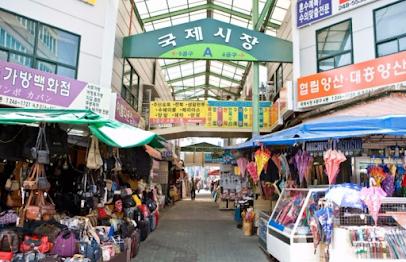
BIFF Square
Experience the vibrant cultural pulse of Busan at BIFF Square, home to street food, film heritage, and lively events in the heart of the city.
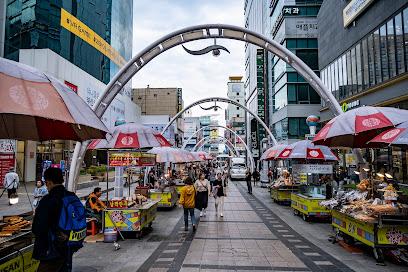
Songdo Bay Station (Songdo Cable Car)
Experience the breathtaking views of Busan from above at the Songdo Bay Station, your gateway to adventure and stunning coastal scenery.
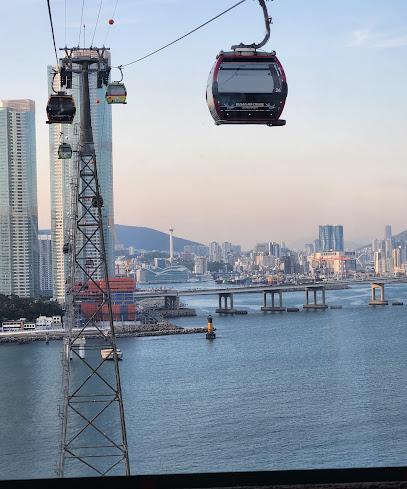
The Bay 101
Discover luxury and breathtaking views at The Bay 101, Busan's premier yacht club for unforgettable experiences and fine dining.
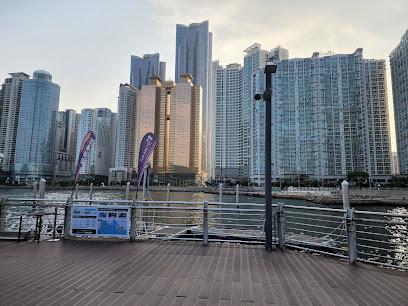
Gwangalli Beach
Discover the beauty of Gwangalli Beach in Busan, where stunning views, vibrant nightlife, and exciting activities await every traveler.
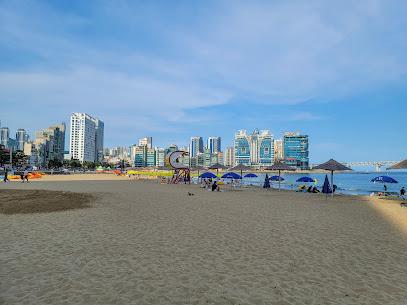
Oryukdo Skywalk
Discover the stunning Oryukdo Skywalk in Busan, where breathtaking ocean views and thrilling heights create an unforgettable experience for every traveler.
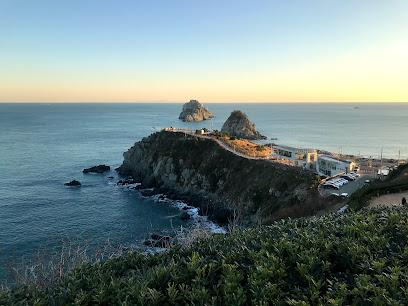
Busan Citizens Park
Explore the beauty and tranquility of Busan Citizens Park, a serene urban oasis filled with lush landscapes and cultural experiences.

Busan Tower
Discover the breathtaking views and rich history at Busan Tower, the iconic observation deck that defines Busan's skyline.
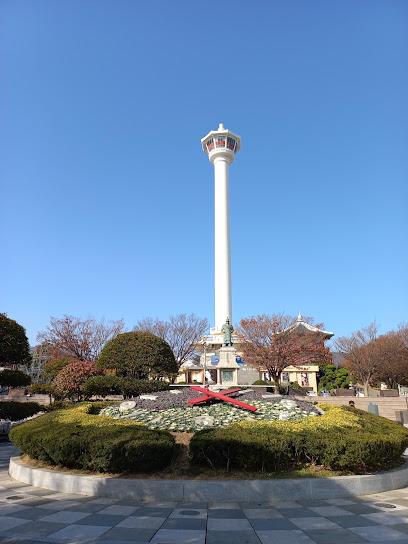
Huinnyeoul Culture Village
Experience the artistic beauty and breathtaking views of Huinnyeoul Culture Village in Busan, Korea – a hidden gem for culture and nature lovers.
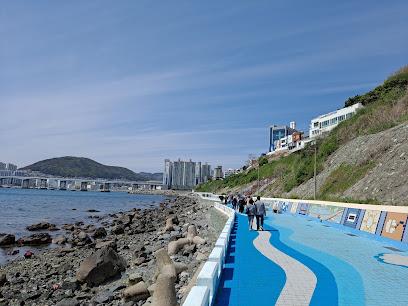
Tongdosa Temple
Explore Tongdosa Temple, a serene haven in Yangsan, offering stunning architecture and a glimpse into the essence of Korean Buddhism.
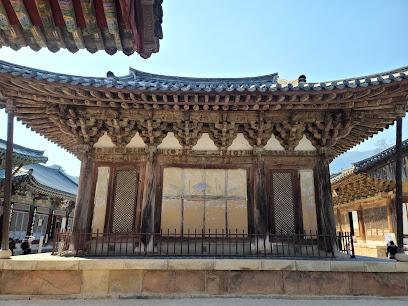
Songdo Cloud Trails
Discover the breathtaking vistas and serene beauty of Songdo Cloud Trails in Busan, a perfect blend of nature and adventure for every traveler.
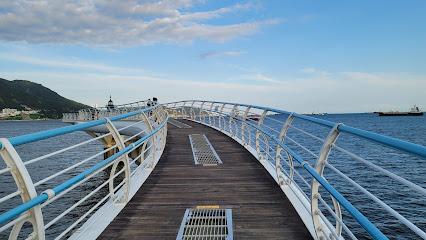
Yongdusan Park
Explore the lush landscapes and cultural gems of Yongdusan Park, a tranquil escape in the heart of Busan, perfect for leisurely strolls and scenic views.
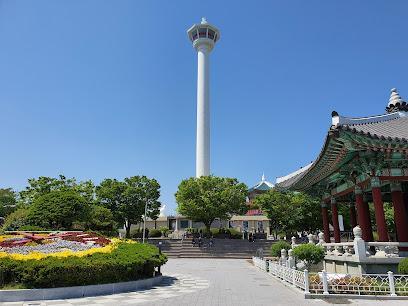
Essential places to dine
Geumsubokguk, Haeundae Head Store
Experience the thrill of tasting authentic fugu at Geumsubokguk in Haeundae—where culinary artistry meets traditional Japanese flavors.
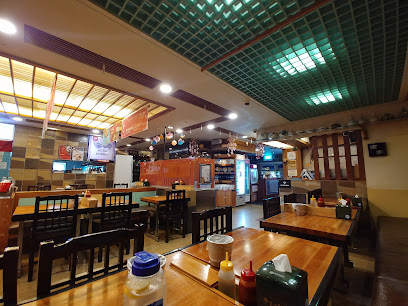
Sinbalwon
Experience authentic Chinese cuisine at Sinbalwon in Busan—where every dish tells a story and delights your palate.
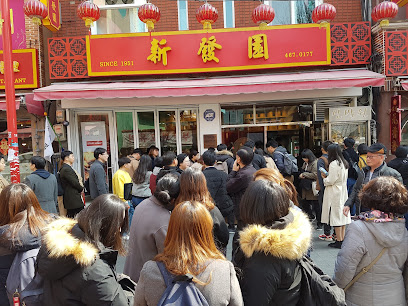
Namaste Haeundae
Experience authentic Indian and Nepalese cuisine at Namaste Haeundae in Busan—delicious flavors in a welcoming atmosphere await you.

Busan Jokbal
Discover authentic Korean cuisine at Busan Jokbal - home of delectable jokbal served in a warm and inviting atmosphere.
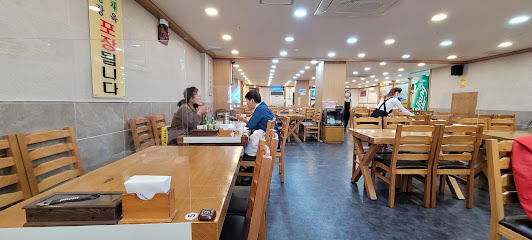
THE PARTY Haeundae
Experience the best of global cuisine at THE PARTY Haeundae – where buffet dining meets elegance in Busan.

Dohee-nae
Discover authentic Korean seafood at Dohee-nae in Haeundae-gu, Busan - where every dish tells a story.
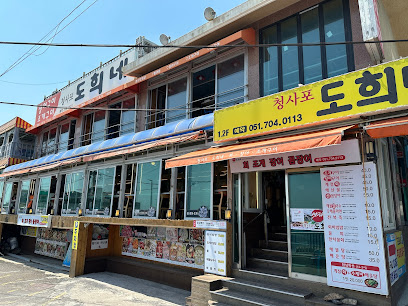
Guess WHO Restaurant
Experience the exquisite flavors of Western cuisine at Guess WHO Restaurant in Busan, where every dish tells a story.
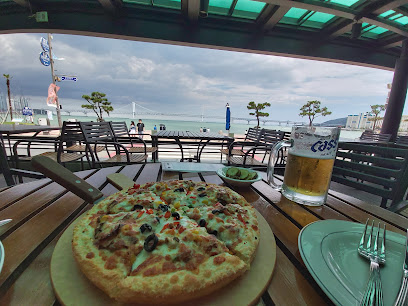
Hi asia(punjab) halal Indian&Pakistani Restaurant
Experience authentic halal Indian and Pakistani cuisine at Hi Asia in Busan – where every dish tells a story.
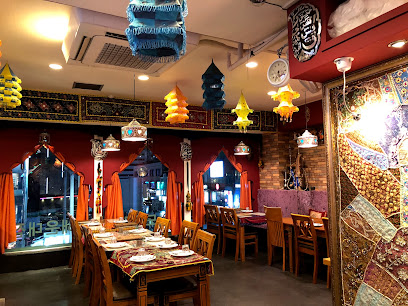
Kongbate
Experience authentic Korean cuisine at Kongbate in Busan – savor delicious flavors in an inviting atmosphere.
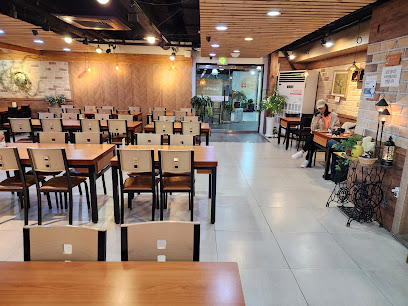
Samojeong
Discover authentic Korean flavors at Samojeong in Busanjin-gu - where tradition meets modern dining excellence.
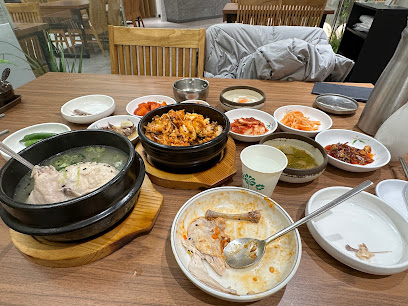
述古堂(Sulgodang)
Experience authentic Korean flavors at Sulgodang in Busan - where tradition meets taste in every delightful dish.
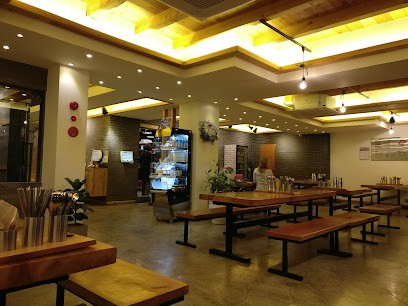
생어거스틴 부산일루아호텔점
Experience authentic Thai cuisine at 생어거스틴 부산일루아호텔점 in Haeundae, Busan – where flavor meets elegance.
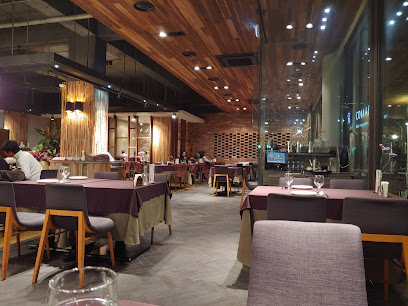
The 8ble
Experience authentic Italian cuisine at The 8ble in Busan - where every dish is crafted with love and tradition.
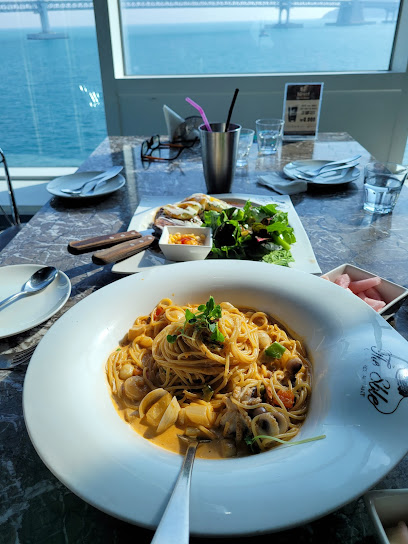
Jejuga
Experience the best of Busan's seafood culture at Jejuga, where freshness meets tradition in every delicious dish.
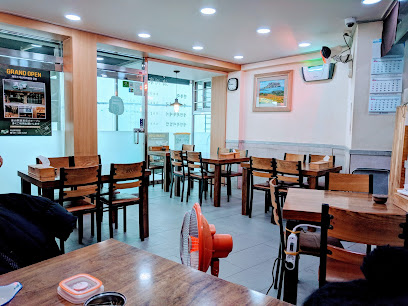
Sinchang Toast
Discover the irresistible flavors of Sinchang Toast - where tradition meets innovation in every delicious bite.
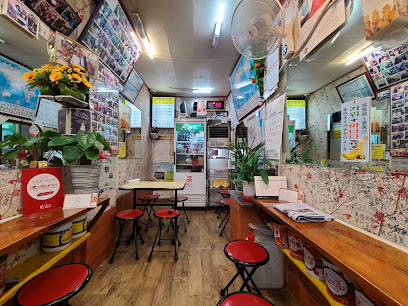
Markets, malls and hidden boutiques
LOTTE Department Store Gwangbok
Discover the ultimate shopping and dining experience at LOTTE Department Store Gwangbok, a premier destination in Busan for tourists.
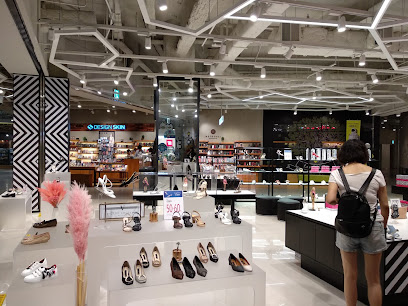
LOTTE Department Store Busan Main
Experience luxury shopping at LOTTE Department Store Busan Main, featuring top brands, gourmet food, and cozy cafes in the heart of Busan.
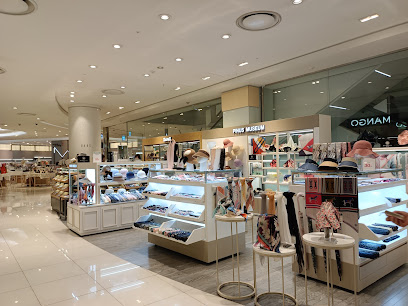
Busan Premium Outlets
Discover luxury shopping at unbeatable prices in the heart of Busan at Busan Premium Outlets, where style meets savings.
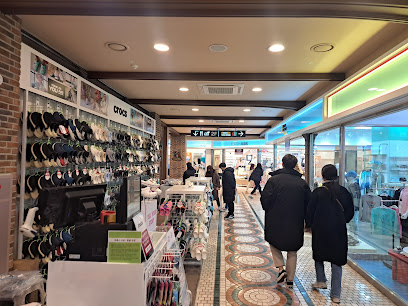
NC Department Store, Seomyeon
Discover NC Department Store in Seomyeon, Busan - a retail hub offering an eclectic mix of shopping, dining, and local culture for the ultimate visitor experience.

SEOMYEON MALL - Seomyeon Underground Shopping Center
Experience the best of Busan at Seomyeon Mall - a shopping paradise with unique fashion, local snacks, and vibrant culture.
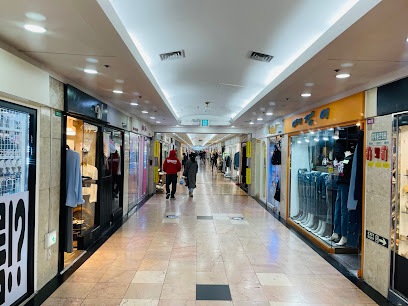
KAKAO FRIENDS Busan Flagship Store
Explore the KAKAO FRIENDS Busan Flagship Store for an unforgettable shopping experience filled with charm, creativity, and beloved characters.
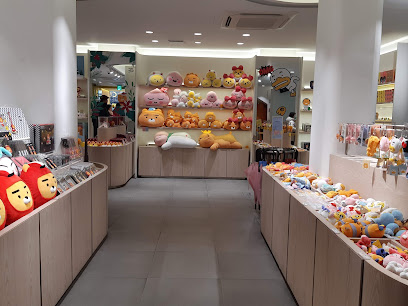
Judies Taehwa
Discover vibrant shopping, dining, and cultural experiences at Judies Taehwa, the ultimate fashion mall in Busan.

Lotte Duty Free Store
Experience unparalleled shopping at Lotte Duty Free Store in Busan, offering global brands at unbeatable prices in a vibrant environment.
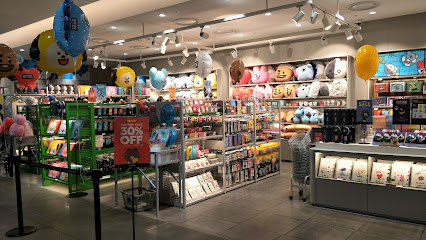
Nampo Underground Shopping Center 南浦洞地下街
Discover a shopping paradise beneath the streets of Busan at the Nampo Underground Shopping Center, where culture meets commerce.
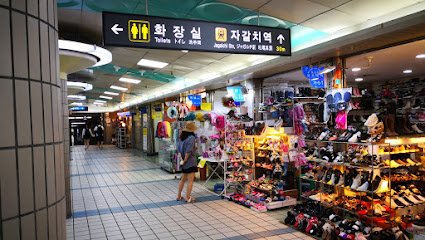
Gamcheon Cultural Village ART SHOP
Discover unique handcrafted souvenirs and local artistry at Gamcheon Cultural Village ART SHOP, a colorful gem in Busan.
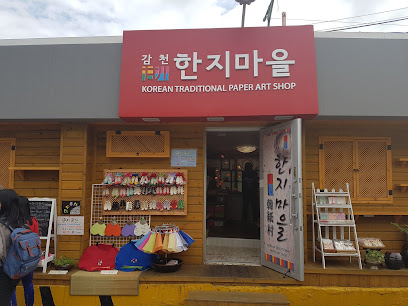
ARTBOX Busan Gwangbok 1st store
Explore ARTBOX Busan Gwangbok for unique Korean gifts and creative souvenirs in the heart of Jung-gu.
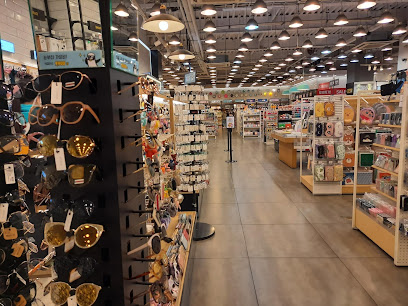
ARTBOX Busan Seomyeon
Explore the colorful world of ARTBOX Busan Seomyeon, where unique gifts and creative stationery come to life in the heart of Busan.
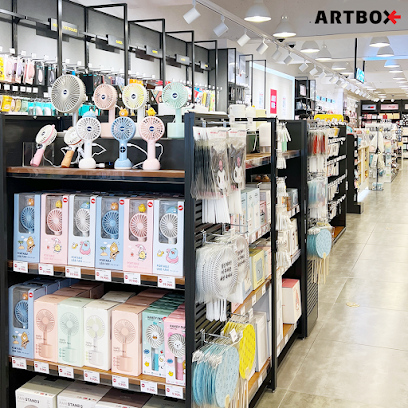
POWER STATION
Explore Busan's vibrant music scene at POWER STATION, the ultimate record store for vinyl lovers and music enthusiasts alike.
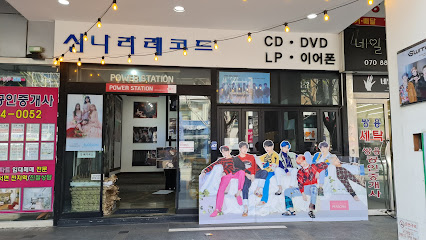
Love is Giving
Explore Love is Giving, a hidden gem in Busan, offering unique home goods that celebrate Korean craftsmanship and culture.
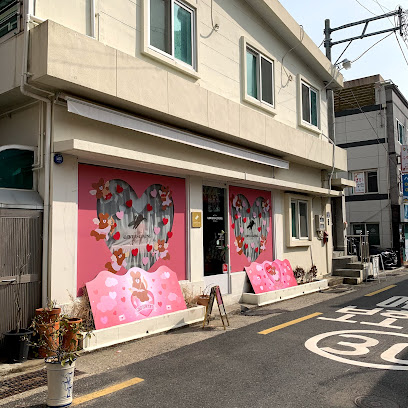
Object Seomyeon
Explore Object Seomyeon, a unique home goods store in Busanjin-gu, Busan, offering stylish decor and quality items for your home.
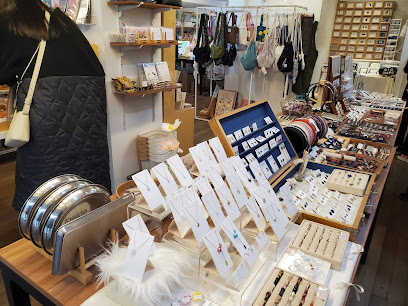
Essential bars & hidden hideouts
Billie Jean
Discover the vibrant nightlife of Busan at Billie Jean, a lively bar offering diverse drinks and an energetic atmosphere for an unforgettable experience.
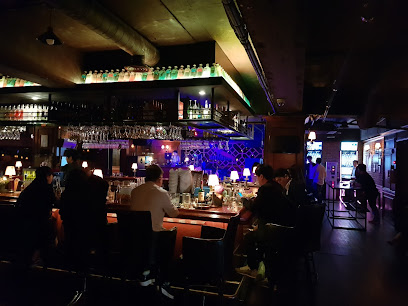
FUZZY NAVEL Haeundae
Experience the vibrant flavors of Mexico at Fuzzy Navel, Haeundae's must-visit cocktail bar and restaurant.
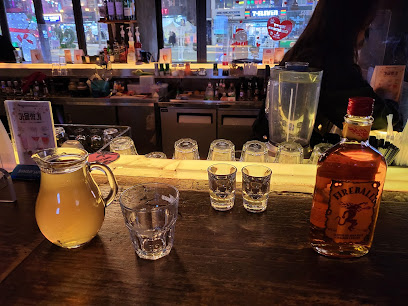
Sam Ryan's
Discover Busan's nightlife at Sam Ryan's, a lively bar in Haeundae with a great selection of drinks and a vibrant atmosphere.
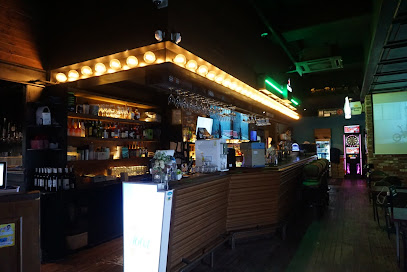
SAVOY
Experience the vibrant nightlife of Busan at Savoy, a lively bar offering a delightful selection of drinks and a welcoming atmosphere.
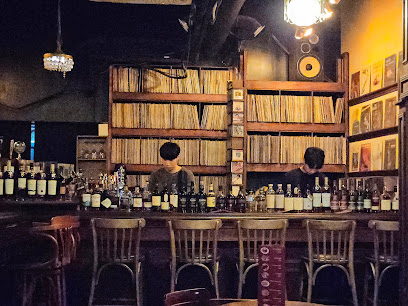
WOOD SIDE BAR
Discover the vibrant nightlife at Wood Side Bar in Busan, where expertly crafted cocktails meet an unforgettable atmosphere.
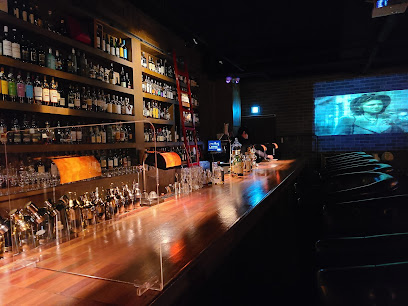
HQ Gwangan
Discover Busan's nightlife at HQ Gwangan, a vibrant bar offering stunning views, live music, and a diverse drink selection.
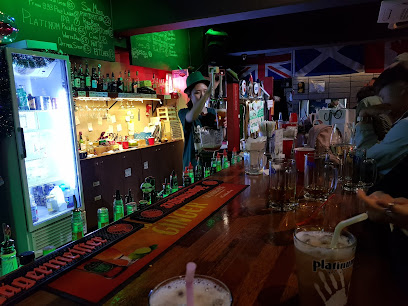
TBR The Back Room
Experience the vibrant nightlife of Busan at TBR The Back Room, a stylish cocktail bar with expertly crafted drinks in a chic setting.
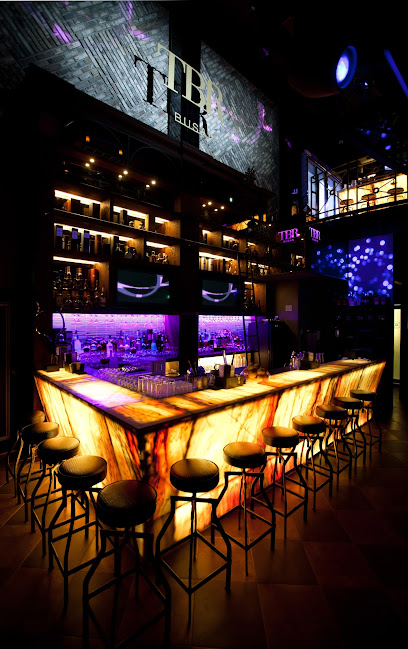
베이스먼트 basement
Experience the vibrant nightlife of Busan at 베이스먼트 Basement, a chic bar known for its creative cocktails and lively atmosphere.
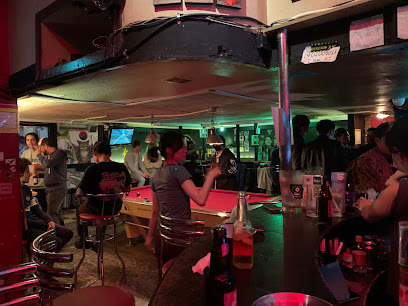
That Night
Experience the vibrant nightlife of Haeundae at 'That Night', a lively pub offering a unique blend of drinks, music, and ambiance.
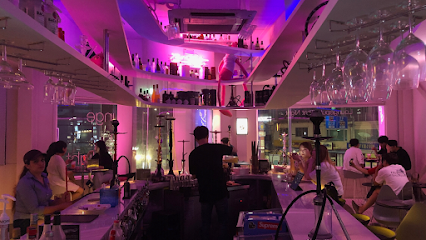
Vinyl Pub Muse On
Discover the vibrant nightlife at Vinyl Pub Muse On, Busan's premier cocktail bar blending unique drinks with an unforgettable atmosphere.
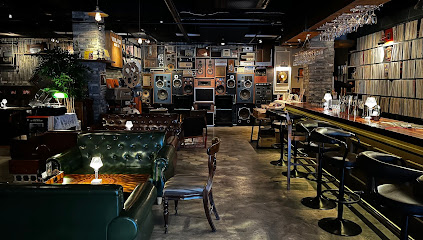
LA Bar&Grill
Discover the vibrant ambiance and delicious cuisine at LA Bar & Grill in Busan, where every meal is a memorable experience.
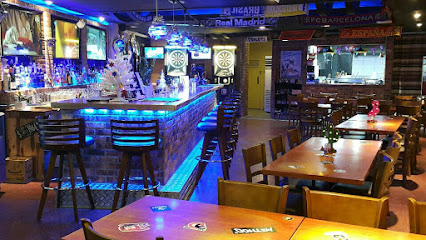
OL' 55
Experience the vibrant nightlife of Busan at OL' 55, where local and international drinks meet a lively atmosphere.
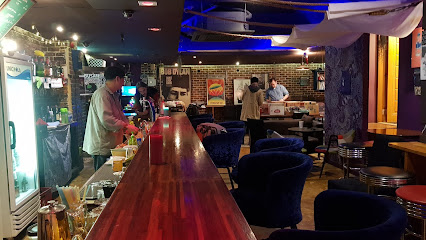
Hard And Heavy Metal Pub
Discover the electrifying atmosphere of Hard And Heavy Metal Pub in Busan, where rock beats meet friendly vibes and a diverse beer selection.
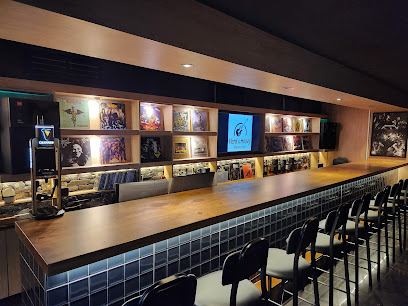
Bar di.lan
Discover Busan's hidden gem, Bar di.lan, where exquisite wines meet a cozy atmosphere for an unforgettable night out.
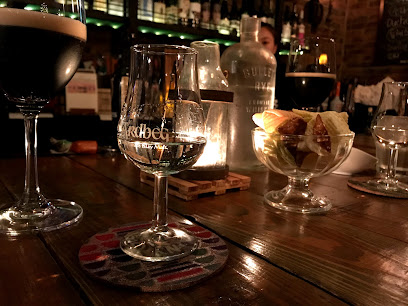
Dormer
Discover Dormer in Haeundae, where expertly crafted cocktails and a cozy atmosphere create the perfect nightlife experience.
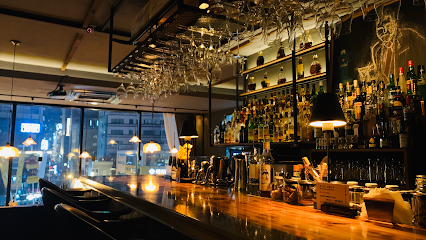
Local Phrases
-
- Hello안녕하세요
[annyeonghaseyo] - Goodbye안녕히 가세요
[annyeonghi gaseyo] - Yes네
[ne] - No아니요
[aniyo] - Please/You're welcome부탁합니다/천만에요
[butaghamnida/cheonmaneyo] - Thank you감사합니다
[gamsahamnida] - Excuse me/Sorry죄송합니다
[joesonghamnida] - How are you?어떻게 지내세요?
[eotteoke jinaeseyo?] - Fine. And you?잘 지내요. 그리고 당신은?
[jal jinaeyo. geurigo dangsineun?] - Do you speak English?영어 할 수 있어요?
[yeongeo hal su isseoyo?] - I don't understand이해하지 못해요
[ihaehaji mothaeyo]
- Hello안녕하세요
-
- I'd like to see the menu, please메뉴를 보고 싶어요
[menyureul bogo sippeoyo] - I don't eat meat고기를 먹지 않아요
[gogireul meokji anayo] - Cheers!건배!
[geonbae!] - I would like to pay, please계산할게요
[gyesanhalkkeyo]
- I'd like to see the menu, please메뉴를 보고 싶어요
-
- Help!도와주세요!
[dowajuseyo!] - Go away!가세요!
[gaseyo!] - Call the Police!경찰을 불러주세요!
[gyeongchareul bulleojuseyo!] - Call a doctor!의사를 불러주세요!
[uisareul bulleojuseyo!] - I'm lost길을 잃었어요
[gireul ilheosseoyo] - I'm ill아파요
[apayo]
- Help!도와주세요!
-
- I'd like to buy...사고 싶어요...
[sago sippeoyo...] - I'm just looking둘러보고 있어요
[dulleobogo isseoyo] - How much is it?얼마에요?
[eolmaeyo?] - That's too expensive너무 비싸요
[neomu bissayo] - Can you lower the price?가격을 내릴 수 있어요?
[gageogeul naeril su isseoyo?]
- I'd like to buy...사고 싶어요...
-
- What time is it?지금 몇 시에요?
[jigeum myeot sieyo?] - It's one o'clock한 시에요
[han sieyo] - Half past (10)십 시 반
[sip si ban] - Morning아침
[achim] - Afternoon오후
[ohu] - Evening저녁
[jeonyeok] - Yesterday어제
[eoje] - Today오늘
[oneul] - Tomorrow내일
[naeil] - 1하나
[hana] - 2둘
[dul] - 3셋
[set] - 4넷
[net] - 5다섯
[daseot] - 6여섯
[yeoseot] - 7일곱
[ilgop] - 8여덟
[yeodeol] - 9아홉
[ahop] - 10열
[yeol]
- What time is it?지금 몇 시에요?
-
- Where's a/the...?...이 어디에 있어요?
[...i eodie isseoyo?] - What's the address?주소가 무엇이에요?
[jusoga mueosieyo?] - Can you show me (on the map)?(지도에) 보여줄 수 있어요?
[(jidoe) boyeojul su isseoyo?] - When's the next (bus)?다음 (버스)는 언제에요?
[daeum (beoseuneun eonjeieyo?] - A ticket (to ....)(....)로 표 하나 주세요
[(...)ro pyo hana juseyo]
- Where's a/the...?...이 어디에 있어요?
History of Busan
-
Busan's history dates back to the Neolithic era, with archaeological evidence of prehistoric settlements. Dolmens and pottery artifacts suggest that the area was inhabited by early human civilizations. The region later became part of the Gaya Confederacy, a collection of polities in the southern Korean Peninsula, known for their iron-working skills and maritime trade.
-
During the Silla Kingdom (57 BCE - 935 CE), Busan, then known as Geochilsan-guk, was an important maritime hub. The kingdom utilized Busan's strategic coastal location for trade and military purposes. The port facilitated exchanges with China, Japan, and other neighboring regions, fostering cultural and economic growth.
-
Under the Goryeo Dynasty (918-1392), Busan continued to develop as a crucial port city. The construction of defensive fortresses like Dongnae Fortress helped protect the area from foreign invasions, including the Mongol invasions of Korea. This period also saw the growth of Buddhist culture, with temples such as Beomeosa being established.
-
During the Joseon Dynasty (1392-1897), Busan flourished as a cultural and economic center. The city's significance grew with the establishment of the Waegwan, a Japanese trading post, in the early 15th century. However, Busan also faced threats, notably during the Imjin War (1592-1598), when Japanese forces invaded Korea. The Battle of Dongnae was a significant conflict during this period, where local forces fiercely defended the city.
-
In the late 19th and early 20th centuries, Busan experienced rapid modernization under Japanese rule (1910-1945). The city saw the construction of infrastructure such as railways, roads, and port facilities, transforming it into a modern urban center. However, this period was also marked by economic exploitation and cultural suppression.
-
During the Korean War (1950-1953), Busan served as a critical refuge for South Koreans fleeing from the advancing North Korean forces. The city became the temporary capital of South Korea and played a vital role in the logistics and supply chains for United Nations and South Korean forces. The influx of refugees significantly increased the city's population and led to rapid urban development.
-
In the decades following the Korean War, Busan underwent significant economic growth and urbanization. The establishment of the Busan Port Authority in 1976 helped the city become one of the busiest ports in the world. The city also became a center for industries such as shipbuilding, automotive manufacturing, and electronics.
-
In recent years, Busan has gained international recognition as a cultural and tourism hub. Events such as the Busan International Film Festival (BIFF), established in 1996, have put the city on the global cultural map. Busan's blend of traditional heritage and modern attractions, including its beaches, temples, and vibrant urban districts, continue to draw tourists from around the world.
Busan Essentials
-
Busan is well-connected both domestically and internationally. Gimhae International Airport (PUS) is the main airport serving Busan, with flights from major cities in Asia and other international destinations. From the airport, you can take the Busan-Gimhae Light Rail Transit or airport buses to various parts of the city. Alternatively, you can reach Busan by train via the KTX high-speed rail from Seoul, which takes approximately 2.5 to 3 hours. Busan is also accessible by long-distance buses from other cities in South Korea, and by ferry from Japan.
-
Busan has an extensive public transportation system, including subways, buses, and taxis. The Busan Metro is the most convenient way to get around the city, with lines connecting major attractions and neighborhoods. Public buses are also available and cover areas not serviced by the metro. Taxis are plentiful and can be hailed on the street or booked via apps. For a scenic experience, consider taking the Busan City Tour Bus, which offers various routes around the city's main tourist spots.
-
The official currency in South Korea is the South Korean Won (KRW). Credit cards are widely accepted in Busan at hotels, restaurants, and shops. However, it is advisable to carry some cash for small purchases or when visiting markets and smaller establishments. ATMs are readily available throughout the city, and many offer international services. Currency exchange services can be found at the airport, banks, and major hotels.
-
Busan is generally a safe city for tourists. However, as with any urban area, it is important to take standard precautions. Avoid walking alone at night in unfamiliar areas and be mindful of your belongings in crowded places. While Busan does not have specific high-crime areas targeting tourists, it is always best to stay vigilant and aware of your surroundings. Popular tourist areas such as Haeundae Beach and Nampo-dong are generally safe but can attract pickpockets.
-
In case of emergency, dial 112 for police assistance and 119 for fire or medical emergencies. English-speaking operators are available. Busan has several hospitals and clinics that offer medical services to tourists. It is recommended to have travel insurance that covers medical emergencies. Pharmacies are widely available for minor health issues and over-the-counter medications.
-
Fashion: Do dress modestly, especially when visiting religious sites. Avoid overly revealing clothing. Religion: Do respect local customs and traditions. Always take off your shoes when entering temples or traditional homes. Public Transport: Do be respectful and give up your seat to elderly passengers. Don't talk loudly or eat on public transport. Greetings: Do greet people with a slight bow or a handshake. Using both hands when giving or receiving items is a sign of respect. Eating & Drinking: Do try local delicacies and accept food offerings graciously. Don't refuse hospitality, as it is considered impolite.
-
To experience Busan like a local, visit local markets such as Jagalchi Fish Market and Gukje Market, where you can buy fresh seafood and traditional Korean goods. Engage with locals, as they are often friendly and willing to share stories about the city. Don't miss visiting Gamcheon Culture Village for its colorful houses and art installations. For a unique experience, take a trip to Taejongdae Resort Park, which offers stunning coastal views and hiking trails.
Trending Landmark in Busan
-
Gamcheon Culture Village
-
Haedong Yonggungsa Temple
-
Jagalchi Market
-
BIFF Square
-
Gukje Market
-
Oryukdo Skywalk
-
Busan Citizens Park
-
Diamond Tower (Busan Tower)
-
Huinnyeoul Culture Village
-
Yongdusan Park
-
Taejongdae Resort Park, Busan
-
Beacon Fire Station in Hwangryeong Mountain
-
Bosu Book Street
-
Samnak Ecological Park
-
Taejongdae Observation Deck
Nearby Cities to Busan
-
Things To Do in Ulsan
-
Things To Do in Gyeongju
-
Things To Do in Daegu
-
Things To Do in Pohang
-
Things To Do in Andong
-
Things To Do in Suncheon
-
Things To Do in Jeonju
-
Things To Do in Daejeon
-
Things To Do in Gwangju
-
Things To Do in Fukuoka
-
Things To Do in Mokpo
-
Things To Do in Suwon
-
Things To Do in Jeju City
-
Things To Do in Seoul
-
Things To Do in Chuncheon

















